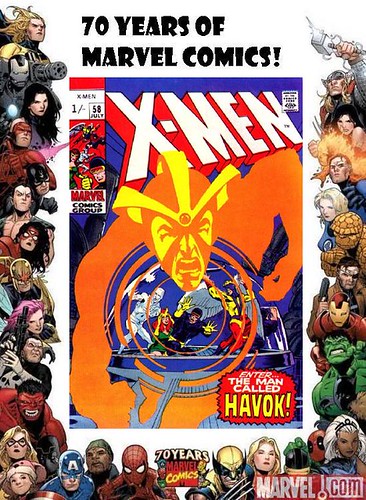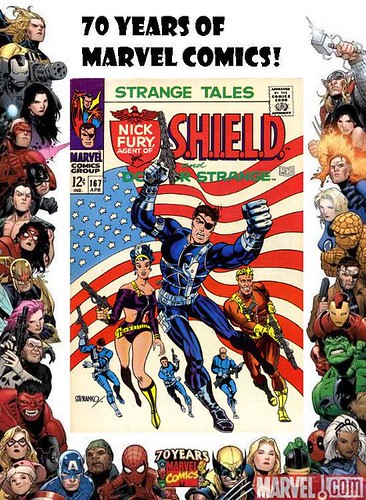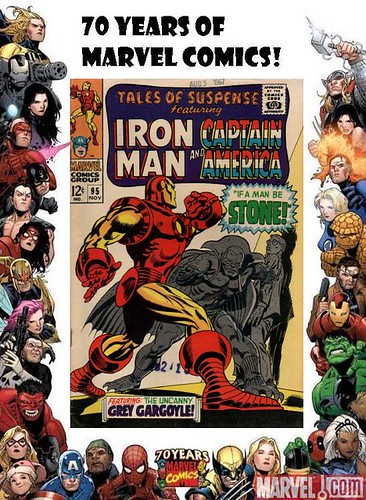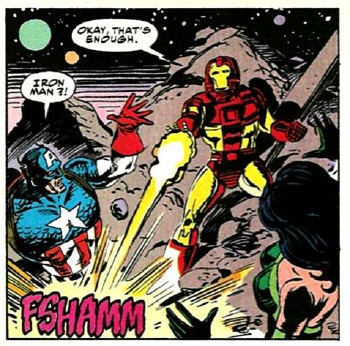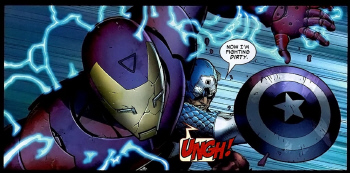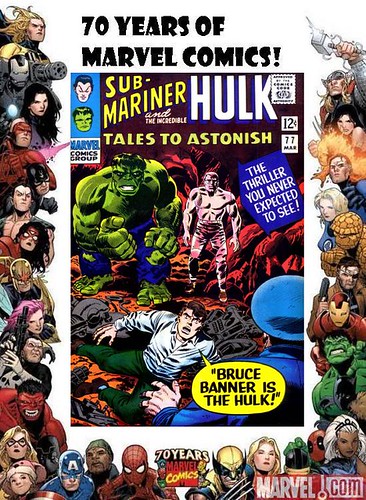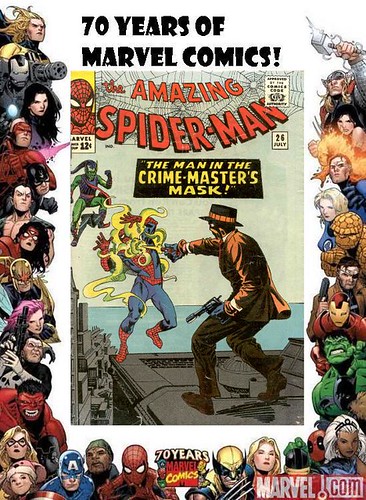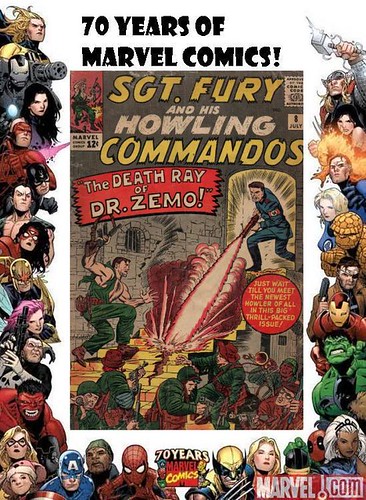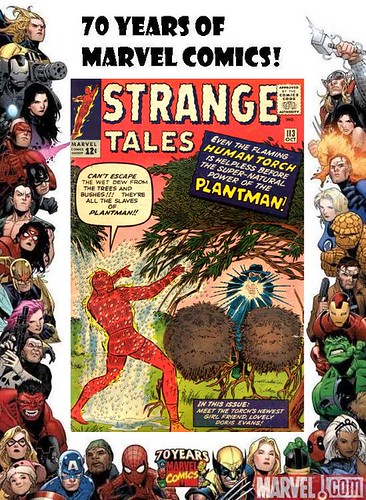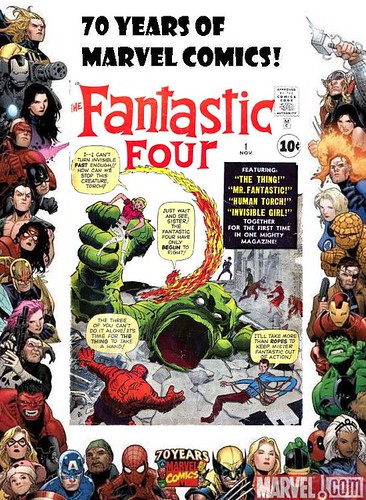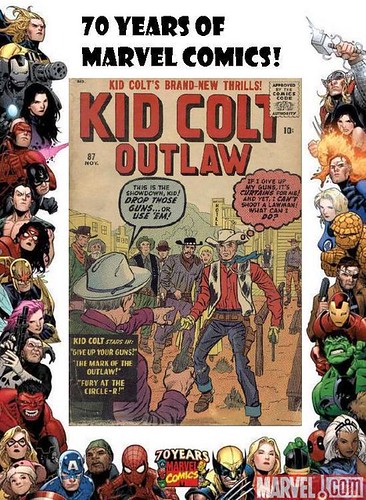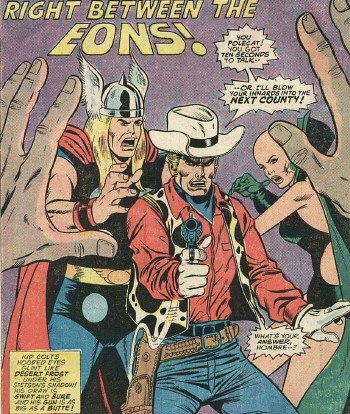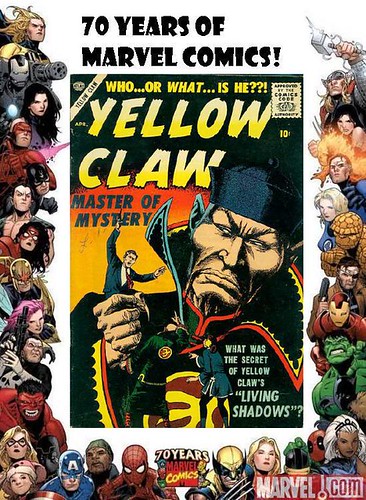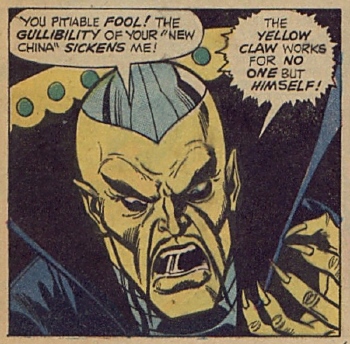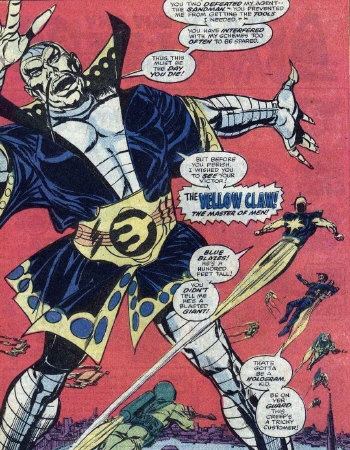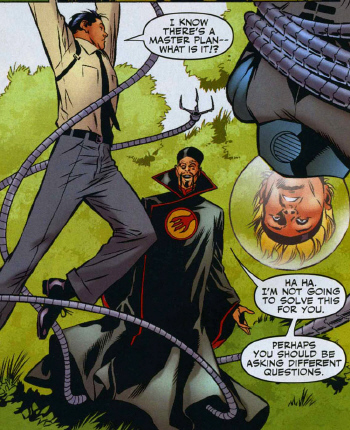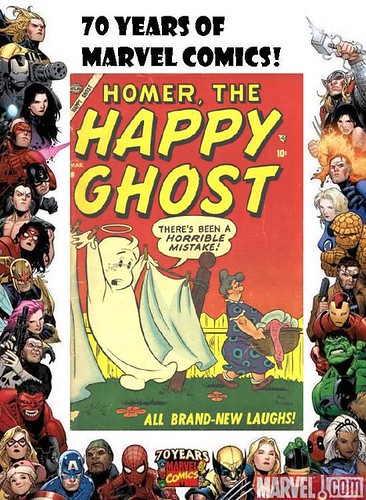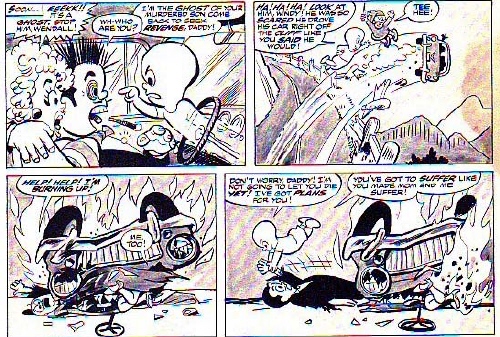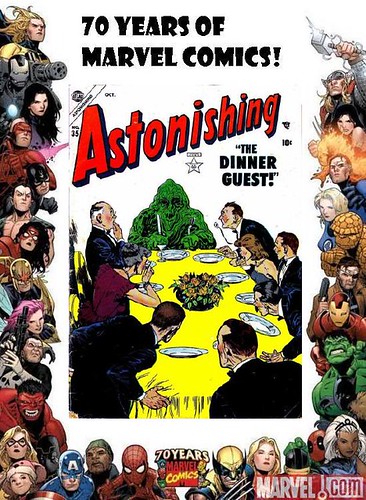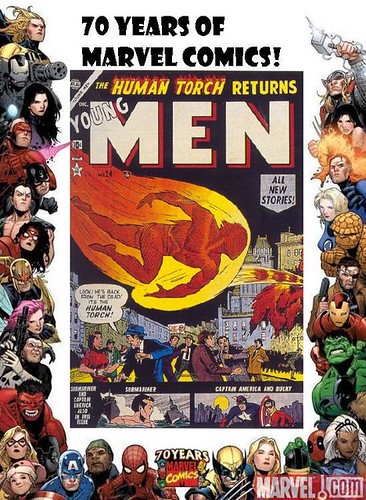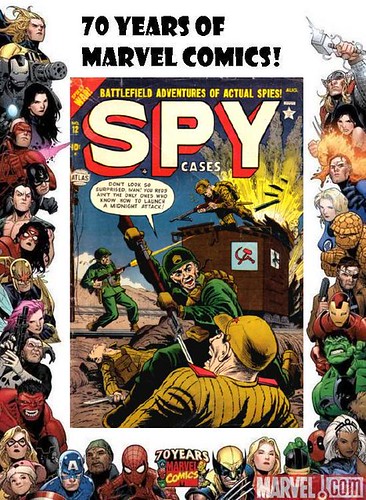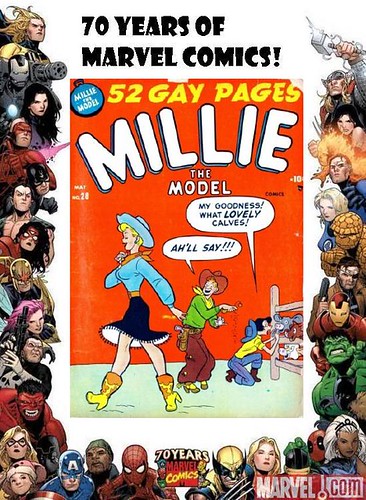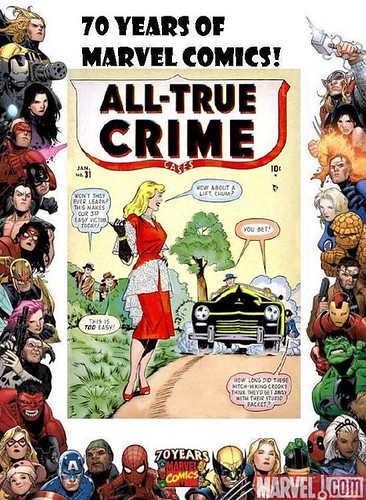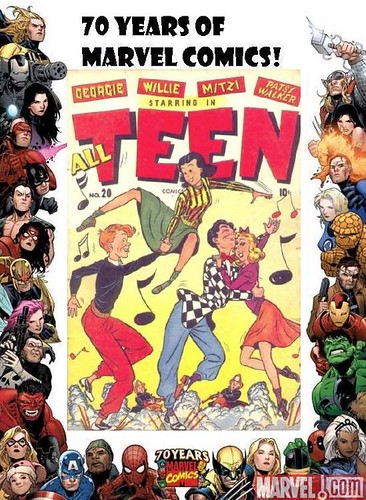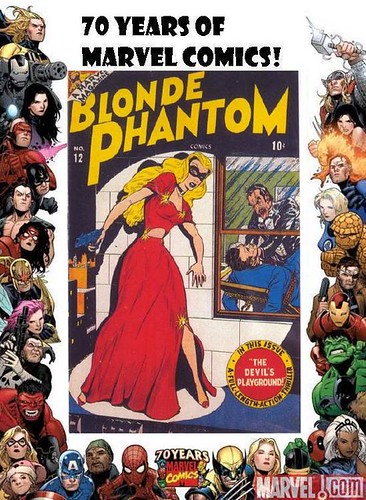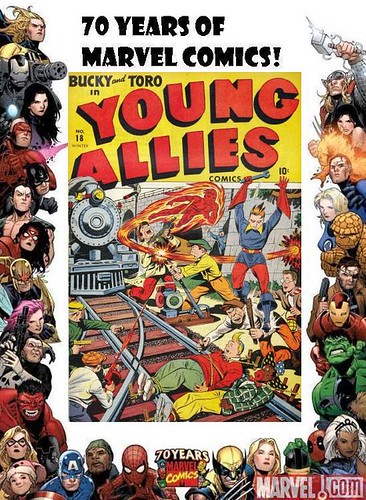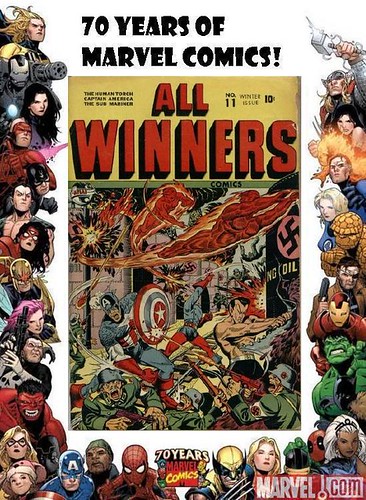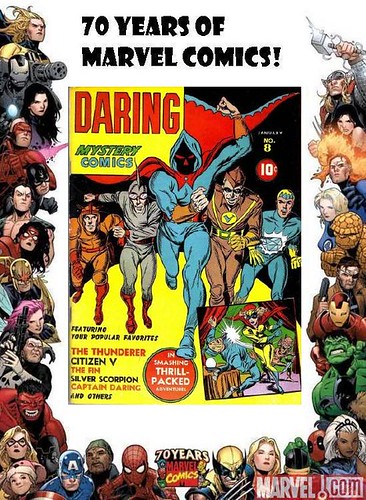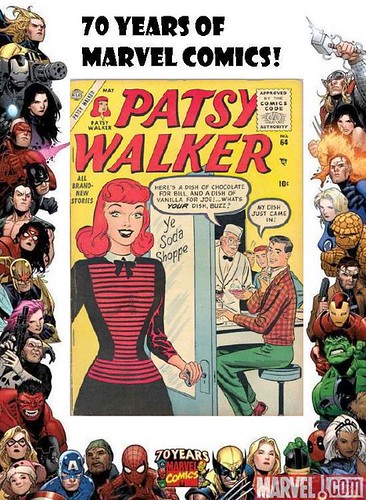
Patsy Walker has been around since 1944, and began as an attempt by Timely-Marvel to copy the success of their Millie the Model title. It worked: Patsy had her own book well into the 60s, through the whole Atlas era and into the Silver Age of superheroes. She clearly had her own fan base in the 60s Marvel bullpen, as Lee and Kirby gave her a cameo appearance at the wedding of Reed Richards and the Invisible Girl.

Even after her own book ended, she wasn't finished, as Steve Englehart brought her, and her husband, back, as guest stars in his run on Amazing Adventures in 1972.
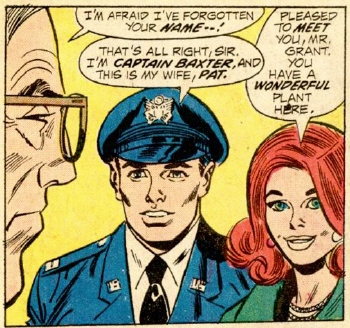
A couple of years later, Englehart reintroduced Patsy, having her help out the Avengers against her soon-to-be-ex-husband and his employers. Along the way, Patsy somehow gained a costumed identity.
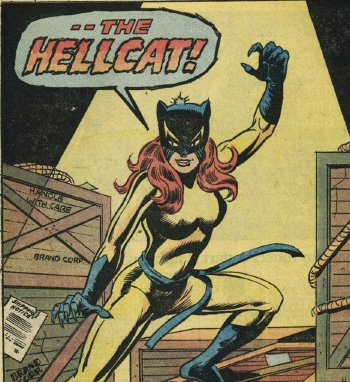
A couple of years after that, Gerry Conway, in pretty much his last act as writer of the Defenders, would bring Patsy / Hellcat to the team, where she would spend the remainder of the 70s and half of the 80s, before leaving the team to settle down with her new husband, Daimon Hellstrom, the Son of Satan.
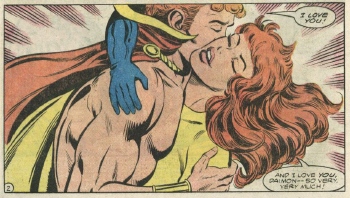
Patsy and Daimon languished in obscurity together, until 1993, when Hellstorm got his own book (it was the 90s, pretty much everyone in the Marvel Universe had their own book. I'm surprised Irving Forbush didn't have his own book). Fans of Patsy would probably be disappointed by her first appearance in Hellstorm...

Then later, Warren Ellis got hold of the book. And killed her off.
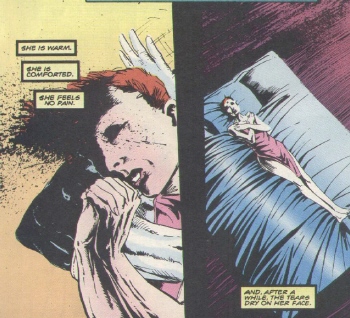
But this being comics, even that didn't stop the Powers-What-Be from using the character. Firstly, she was rescued from hell by the Thunderbolts.

And then, courtesy of long-time fan, Steve Englehart (it's that man again!), she got her own book again, albeit briefly.

And now, in 2009, in these days of Civil Wars and Secret Invasions, when everything's grim and gritty, and just when you think Patsy has nothing to offer anymore, she's back in a thinly-veiled "homage" to Sex and the City.
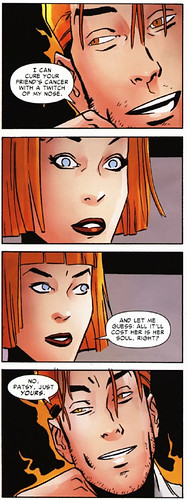
Honesty, whatever next?
Anyway, elsewhere in the real world in 1956, the people of Europe were thrilling to the first Eurovision Contest. Sadly, no Terry Wogan. Two planes collided in mid-air above the Grand Canyon, Egypt nationalised the Suez Canal, and frogman "Buster" Crabb vanished in Portsmouth harbour, sparking a flurry of conspiracy theories.
In the world of entertainment, Elvis was staying at the Heartbreak Hotel, Invasion of the Body Snatchers was on at the pictures, David Niven was going Around the World in 80 Days, and musical fans could go see The King And I with Yul Brynner. But only if he wasn't busy. Boom boom.
On the small screen, Tony Hancock was making the move from radio to telly, and Hughie Green was introducing Opportunity Knocks, without which we might well be spared half the tripe on Saturday night tv. At the library, one could pick up a copy of Gerald Durrell's My Family and Other Animals, whilst theatre-goers could see a very young Alan Bates starring in Look Back in Anger. Something for everyone there, I'm sure you'll agree.
